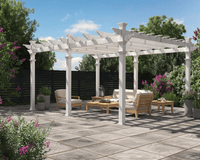Planting your Spring Bulbs in the Fall
Hello again everyone. It’s been a while and fall is now upon us. I would like to think most of us have harvested our veggies and cleared the garden out for the winter rest to prepare for spring gardening. (See more on this in our blog: https://wearevita.com/blogs/learning/garden-harvest-and-soil-prep-for-the-next-growing-season). At Vita, we care about our customers’ gardening experience and are always on the lookout for tips and tricks to help you with your gardening journey. Whether you are a seasoned vet or a beginner trying something new, we’re here to help!

Today we would like to help you with those bulbs that bloom in the spring. Tulips, Daffodils, Crocus, Hyacinths and Snowdrops all bloom in the spring - but did you know these bulbs require periods of cold weather to achieve optimum growing strength? After your garden has been prepared for winter, you may want to plant those bulbs as soon as possible. With only a few short weeks left, the ideal planting time for these bulbs is in weather that typically gets between 40° and 50° F consistently for about 4-6 weeks.
HERE’S SOME TIPS FOR SUCCESS:
- Keep the labels from your bulbs if you are planting many varieties. This is a great way to decipher bulbs from one another as they look very similar.
- The labels will give you crucial information about planting depth as well.
- You can even write the variety on a popsicle stick and stick it in the soil next to your bulbs so you remember what (and where!) you planted.
- When planting, keep the pointy side of the bulb facing up.
- After bulbs are in place, backfill with appropriate soil and gently compress the soil over the bulb. Do not pack as we want to encourage roots to grow.
- Water the bulbs at planting to fill any air pockets and to stimulate growth. There is no need to water during the winter unless you are in an arid climate.

To obtain maximum growth and stability of the bulbs during the growing season, here is an excellent chart provided by our friends at American Meadows on planting depths.
If you are looking for early spring flowers, you will need to plant these bulbs in the fall (autumn). You may be asking, “why so early? If they will be in the ground over winter, won’t they freeze and be destroyed”? Not at all. Most bulbs require a certain number of chill hours or temperatures below freezing, in order to bloom well. This can also be done in pots stored outdoors or in a garage or shed. However, if you are planting in the garden, plant them in groupings rather than a bulb here and a bulb there. This will optimize aesthetic appeal when they bloom.

Now we need to talk about protecting those bulbs against rodents. As much as we enjoy our spring flowers, so do squirrels and chipmunks. Many bulbs such as tulips and crocuses, are especially tasty to hungry rodents. Chicken wire around the bulbs at planting time will help in deterring the rodents from digging them up. Another trick is to put less tasty bulbs planted above the tastier ones. Daffodils are great for this. Using repellents work as well; however, you will want to choose a non-toxic type. Poisoning the ground in order to keep rodents out may also restrict the flowering results you desire.

Bulbs are the ultimate in delayed gratification. They appear when you most crave color, so they’re definitely worth the early planting. Most bulbs will return for many years to come. Bulbs make a great long-term investment in your garden. As for the end of the growing season, don’t tie off or trim things to keep them neat. The plant needs the dying leaves for photosynthesis, or to make food. The bulb will store this energy and bloom again next growing season. If this is removed too soon, the bulb may not flower again. Instead, try planting something that typically begins maturing just after the tulips have finished blooming to conceal the spent flowers and leaves, and provide continual interest in the garden.

To find the best conditions to grow where you live, visit https://planthardiness.ars.usda.gov/ for those bulbs to survive in the winter. This chart will give you great insight into when to start planting.
I hope this information was useful to you. Make sure to follow us @welcometovita to see all our useful tips and tricks for all things gardening.
Thank you,
Pete




